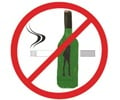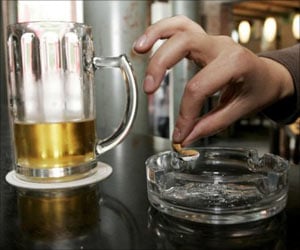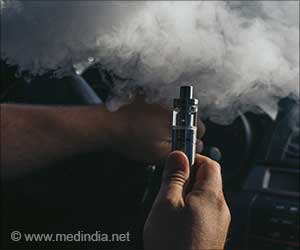Alcohol intoxication is often accompanied by trouble walking or slurred speech, however, exceptionally tolerant individuals do not show signs of tipsiness...
Alcohol intoxication is often accompanied by trouble walking or slurred speech, however, exceptionally tolerant individuals do not show signs of tipsiness even though they are very intoxicated, says an expert.
John Brick, executive director of Intoxikon International said that one of the deadliest consequence of alcohol over-consumption is impaired driving and it is still difficult for trained observers to fully identify "intoxication," given that so many factors contribute to it."It is important to understand and recognize intoxication because of the risk for injury that results from it," he said
"Understanding and recognizing an intoxicated person can help us make decisions about allowing a person to drive, accepting a ride from someone, or cutting off a drinker," he added.
Brick revealed that 'Obvious intoxication' as defined in some courts is not always the same as 'visible intoxication'.
In some states 'obvious' intoxication means that if someone has consumed a large number of drinks, it should be obvious that they are intoxicated and not capable of driving. Other state laws define 'visible' intoxication as specific types of behaviour, such as trouble walking, slurred speech and other common signs of alcohol intoxication.
In most people reliable signs of intoxication are present by casual observation at a blood alcohol concentration (BAC) of 150 mg/dl or more, even in most tolerant individuals.
Advertisement
"This presents a particular challenge to preventionists," said Brick.
Advertisement
"A very small woman drinking rapidly could attain a BAC of 150 mg/dl with only four standard drinks, whereas a large man might require 10 or 12 such drinks, again depending on how long they were drinking and other scientific factors," he added.
At times when people show no signs of visible intoxication even though they are very intoxicated, the only way to know if they are intoxicated might be to count drinks, Brick explained.
"If you have a policy that allows a certain number of drinks per hour, for example, you may rely on counting rather than paying attention to behavior, and end up overserving," he said.
Drink counting is also problematic in a busy bar etc, so Brick said there is a need for further research to establish a reasonable maximum number of drinks to be served, coupled with training to identify signs of intoxication.
The review is published in Alcoholism: Clinical and Experimental Research and is currently available at Early View.
Source-ANI
LIN















